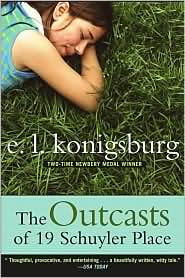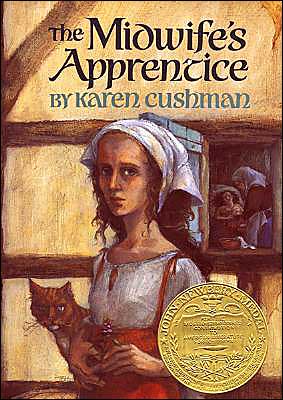
Summary
Alice and her friends struggle through the summer before their freshman year of high school. Instead of having the time of her life, we see our heroine faced with a new set of challenges. Alice’s father is on the verge of becoming engaged, her friend Elizabeth is struggling with an eating disorder while her friend Pamela is facing major issues at home. Alice must also learn to cope as a dear friend and mentor struggles with health issues. The Grooming of Alice spends a great deal of time focusing on body image and the idea of finding your own “normal” as Alice and Pamela contend with Elizabeth and her struggle with weight.
Impressions
Overall I think Naylor does a fantastic job addressing some tough issues teens face while refraining from becoming moralistic or preachy. The reader is allowed to process difficult issues like weight, sexuality, and relationships along with Alice. Though part of a series, Naylor creates relationships in this book in a way that makes a newcomer feel like a veteran. I quickly felt like I knew Alice, her friends and her family. As a general note, this book does express sexuality and the female anatomy in a very upfront and honest way. I would feel comfortable recommending this book to older middle schoolers (8th grade) and high school students. In my opinion, all references are made in decent taste that empowers and educates the reader.
Review: Booklist
In the "Story behind the Story" about the Alice books [BKL My 1 99], Naylor talks about how she keeps up with the contemporary teen scene. This twelfth book in the series is as relevant, candid, and touching as ever, both funny and reassuring about what it means to be "normal." It's the summer before high school. One of Alice's friends seems headed for anorexia, her older brother has a superficial girlfriend, and another friend, Pamela, is having trouble at home. When Pamela runs away and asks Alice to hide her overnight, Alice must decide if loyalty to her friend comes before being honest with her dad. Alice is a bit too wise and therapeutic (she says she wants to become a psychiatrist), but fans of the series will grab this for the poignant friendship, family, and dating stories, as well as for the facts about their bodies and insights into themselves. In a great climactic episode, the friends attend a "For Girls Only" seminar at the YMCA, where they learn about grooming and nutrition and also about male and female private parts. They gasp and giggle and cover their faces when the nurse tells them to go home and examine themselves with a hand mirror, but, of course, they do what she says, Then Alice tries to tell her father and brother about it.
Suggested Activities
I would include this book in a library display that focuses on series targeted toward older teen readers, primarily female. The display would include a sign that reads “Books Girls LUV.” I would also include the Twilight series and the Gossip Girl series among others.
Bibliography
Naylor, P.R. (2000). The Grooming of Alice. New York: Atheneum Books for Young Readers. ISBN: 0689826338.
Rochman, H. (2000, June). [Review for the book The Grooming of Alice by Phyllis Reynolds Naylor] Booklist, 96, 1880-1880.






